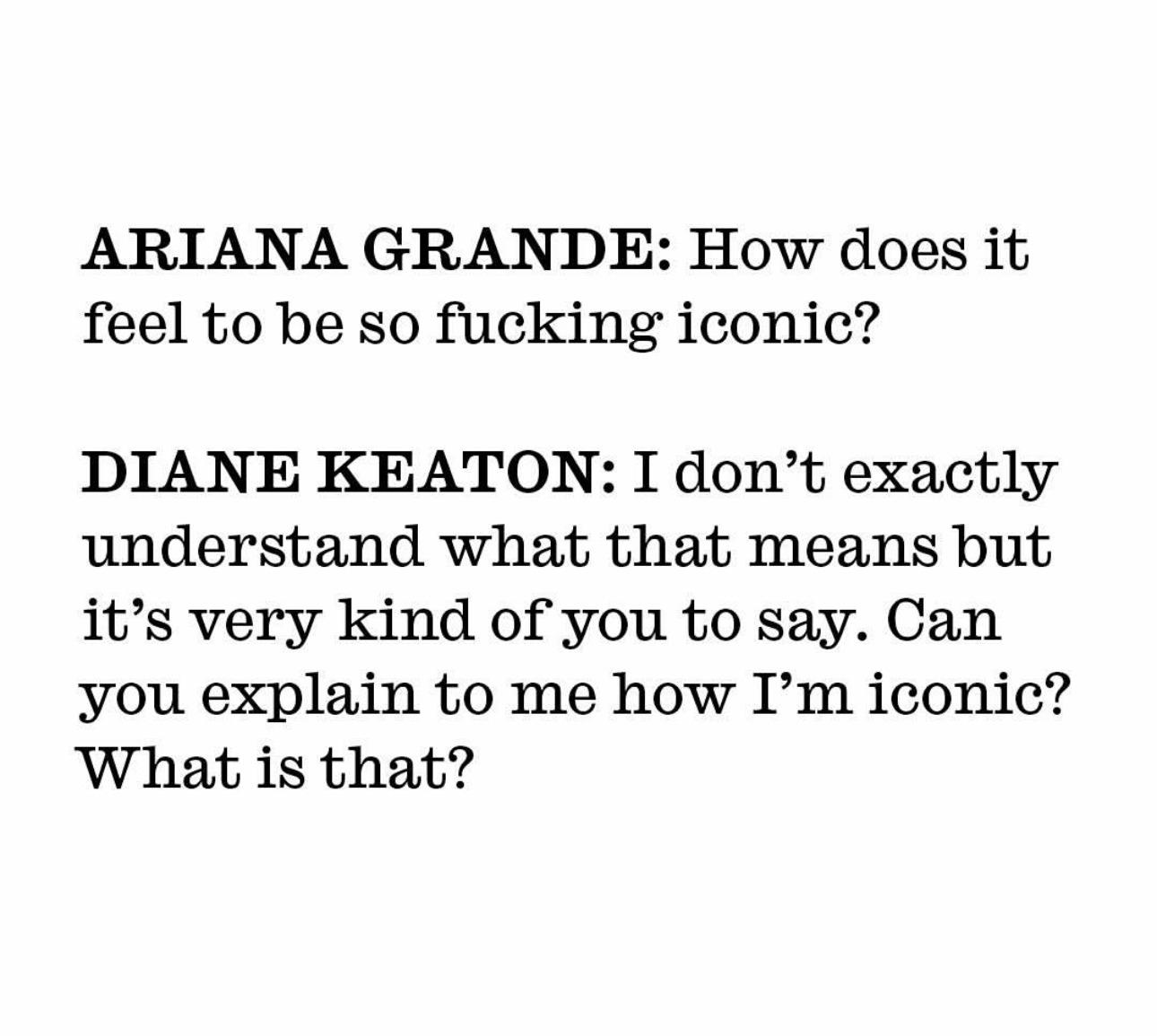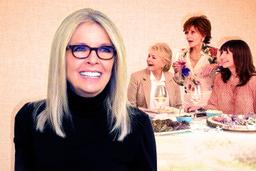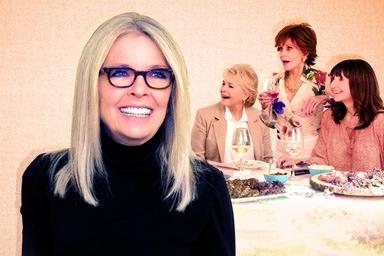At some point after I heard the news, I went outside and thought about her. It was a bright, crisp fall day, Diane Keaton weather: big, happy patches of sun on the sidewalk, red leaves that dazzled your eye while at the same time being totally matter-of-fact. You know someone meant something to you when they have their own climate in your brain. It was easy to picture her under the autumn trees, grinning in a floppy hat, one hand on her head, enjoying October, wearing a blazer that was half Brideshead Revisited and 10 percent Miami Vice. If I made a list of people who should be allowed to live forever, she’d be on it, but she died on Saturday, at the age of 79. 79! She still seemed middle-aged to me, but then she’d seemed sort of spiritually middle-aged even in her 20s, when she made being spiritually middle-aged look like the coolest thing a person could be. She lived at an odd angle to time, as stylish people often do; she’d have seemed 45 if she’d lived to be 4000.
Diane Keaton was one of the best actors in the history of American movies, and it’s a mark of her greatness that after she died, I didn’t think much about movies at all. I was thinking about her more as a person, or—since I never met her—as an idea. I don’t really understand what celebrities do to our minds: how you can love someone without knowing them, how you can watch them in a Hollywood comedy and still fully grasp the blueprint they provide for how to authentically exist in the world.
It’s easier to talk about movies, and my God, there are infinite things to say about Keaton as a film actor: Imagine having a career of which it can legitimately be said that neither The Godfather Part II nor Something’s Gotta Give would have worked without you. Imagine having the range to play every sort of comedy—she was a genius both as the funny one and as the straight man—and also to be as dramatically devastating as she is in this scene, from the 1982 divorce drama Shoot the Moon, where all she does is smoke a joint and hum the Beatles in a bathtub:
Imagine somehow embodying the most far-out ’70s individualism, as she did in Annie Hall, and the most comforting ’90s middle-class traditionalism, as she did in Father of the Bride. As the wife of Steve Martin’s character in the latter movie, she found an inflection for the word “George”—half amused, half disappointed, drawing on a heroic but dwindling stock of patience—that now feels like the force that held the American family together for an entire generation:
Outside in the autumn air, though, I wasn’t thinking about movies much. I was thinking I loved the way she was simultaneously the coolest person in Hollywood and also the person least aware of what anyone else thought was cool. Whatever she did, she didn’t do it to get noticed, or to get likes, or for clout. She did it, or so it seemed from a distance, because she wanted to do it. Katharine Hepburn, one of Keaton’s original influences, said of Humphrey Bogart that he liked to sail his boat, so he sailed his boat, and he liked to drink, so he drank. Keaton liked to wear men’s neckties, so she wore men’s neckties. She liked to live with her mom, so she lived with her mom. She liked to walk her dog, so she walked her dog. And that was how she went through life.
I was thinking I loved that she was able to be so completely herself without becoming an unkind person. Very stylish people are often impatient and judgmental. Think of fashion designers; they have an urgent idea about how the world ought to look and feel, which is what gives them their culture-shaping power, but it can also make them seem dismissive, even cruel, toward people who don’t fit their vision. Keaton, in her own way, had as strong a sense of style as Karl Lagerfeld, but not a single acquaintance who spoke up after her death remembered her as anything but open, welcoming, and kind. For herself, she liked doing her own thing, but she didn’t feel compelled to impose it on anyone else or insist it was the only way to be. She accepted people on their terms, something not every artist manages. It made her seem doubly generous: first because she gave us her own delightful spin on how to be alive, and second because she invested no importance in whether we followed it.
It’s not that life came easy for her, or that she didn’t have struggles—she battled bulimia, and she had her share of personal difficulties—but she emerged from the other side with a kind of joyful clarity. If you understand what really matters, she seemed to say, you can stop worrying so much about the petty stresses and pressures that you (I, at any rate) spend too much of your life reacting to. You can just ... do the things that make you happy. You can be nice to the people around you without obsessing over what they think. And if you do find yourself obsessing over what they think, you can laugh about it, because that’s human, too.
And at a moment when we all (I, at any rate) spend half of every day chasing validation on the internet, there’s something amazing about an artist who is genuinely curious about humanity, genuinely true to herself, and genuinely unconcerned about the latest in-group jargon that we all use to signify our belonging on social media.

Here’s something she once said in an interview: “I really enjoy seeing. I guess my favorite thing in life is the fact that I can see. It’s just so unbelievable.” And I mean … yes! It really is! Thank you, Diane Keaton, for reminding me to appreciate my eyes!
We carry celebrities around with us in little boxes in our brains. Who knows why? We just do. The most we can hope for is that when we take them out and look at them, they make us feel more sane, not less; more assured, not more frightened; more accepting, not more alienated from ourselves. I don’t think many movie stars have been more wholly on the right side of that line than Diane Keaton. It’s strange, I guess, to compare her to David Lynch—though she directed a good episode of Twin Peaks!—but she shared an essential quality with the great director. By fully inhabiting her own strange self, she helped us live in ours.


